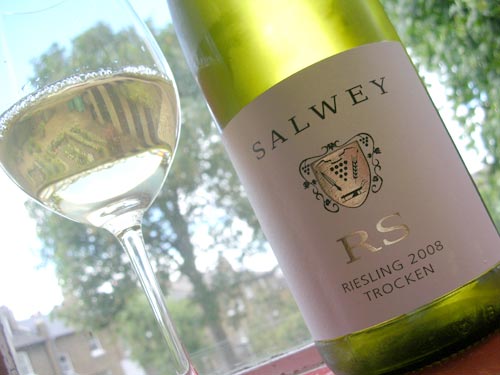Salwey, Riesling Eichberg GG, 2008
Germans love dry wine - this still comes as surprise to many foreigners who think of Germany as country of sweet wine. Actually, almost two thirds of all wine produced in Germany is dry. On top of that the VdP, the association of top producers, are currently pushing for a new top category in the wine classification system that applies to dry wine only. This is where the label 'GG', short for 'Großes Gewächs' (literally 'great growth') of today's Riesling from Baden comes from.
In order to be classified as GG, a wine has to come from a certified top vineyard, yields have to be low, only grape varieties that have some tradition in the region can be used, grapes have to be harvested selectively by hand and the wine has to have the same quality level as a late harvest. And, of course, the producer has to be a member of VdP. The Baden winemaker family Salwey are, and this is their 2008 GG Riesling.










